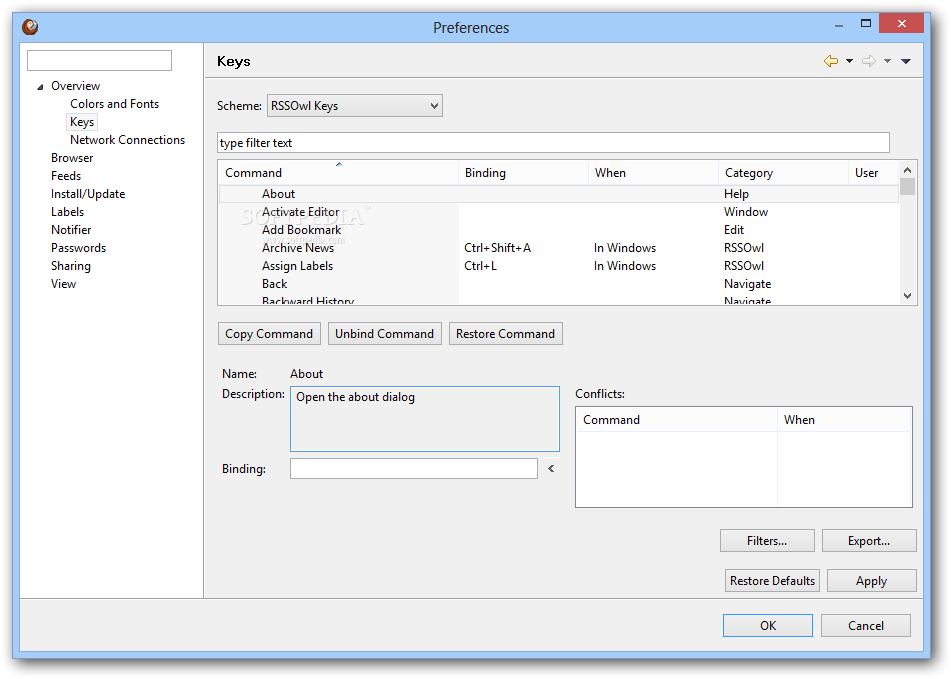
#Rssowl download how to#
To understand the reuse behavior of end-user programmers and to provide implications on how to further support them, we conducted an empirical study in which eight end-user programmers foraged in online repositories, specifically App Inventor Gallery and File Exchange.
#Rssowl download code#
Finding and evaluating which program variants to reuse code from is challenging because the searching mechanisms within online repositories are not optimal. Further, this study methodology can be adapted by researchers to understand other aspects of programming such as implementing, reusing, and maintaining code.Įnd-user (non-professional) programmers often opportunistically create programs, they evaluate various alternatives and reuse existing code by merging components from it or modifying it to suit the context or problems of their programs. Our results give us a better understanding of the programming behavior of web-active end-users and can inform researchers and professionals how to create better support for the debugging process.

We also identified the strategies used by the participants when finding and fixing bugs. Clear cues helped participants to find and fix bugs with ease while fuzzy and elusive cues led to useless foraging. On analyzing the data, we identified three types of cues: clear, fuzzy, and elusive. The programmers completed two debugging tasks using the Yahoo! Pipes web mashup environment. Through the lens of information foraging theory, we analyzed the data from a controlled lab study of eight web-active end-user programmers. Information foraging theory helps understand how users forage for information and has been successfully used to understand and model user behavior when foraging through documents, the web, user interfaces, and programming environments. To understand the foraging behavior of end-user programmers when debugging, we used information forging theory.

The debugging on these platforms is challenging as end user programmers need to forage within the mashup environment to find bugs and on the web to forage for the solution to those bugs. Web-active end-user programmers spend substantial time and cognitive effort seeking information while debugging web mashups, which are platforms for creating web applications by combining data and functionality from two or more different sources. As a consequence, the proposed solution allows to dynamically adapt the content shown on pervasive displays, based on viewing data that can be easily obtained in field deployments. The results demonstrate that inverse foraging accurately estimates interest, achieving an R2 above 70% in comparison to self-reported interest. Different foraging models are evaluated by using synthetic data and with a controlled user study. Through inverse foraging, the parameters of a foraging model are fitted to the values of viewing times observed in practice, to yield estimates of user interest. The proposed approach builds on the information foraging theory, which assumes that users optimally decide on the content they consume. This article presents a simple yet accurate method of estimating users' interest in multiple content items shown at the same time on displays. Tracking of body postures and gaze has been explored as an indication of attention still, existing works have not been able to estimate the interest of passers-by from readily available data, such as the display viewing time.


Users' engagement with pervasive displays has been extensively studied, however, determining how their content is interesting remains an open problem.


 0 kommentar(er)
0 kommentar(er)
